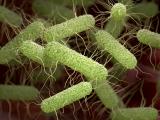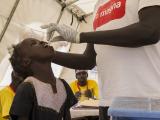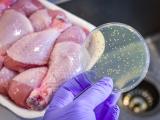Jul 15, 2008 (CIDRAP News) The Centers for Disease Control and Prevention (CDC) said today that the number of cases in a nationwide Salmonella outbreak that might be linked to contaminated tomatoes and hot peppers has climbed to 1,167 and that new illnesses are still being reported.
On Jul 9 CDC officials warned that people in high-risk groups, such as infants, those with impaired immune systems, and elderly people, should avoid fresh jalapeno and Serrano peppers. New evidence from a second round of case control-studies suggested the two items were associated with the outbreak, along with some types of tomatoes from certain growing regions, the agency said.
The length of the outbreak, the difficulty of the investigation, and the large numbers of sick people have frustrated federal officials, consumers, and legislators and angered the produce industry.
The CDC has said the nature of some of the food items, such as fresh salsa and pico de gallo sauce, consumed by many of the sick patients has complicated the investigation. "When food items are mixed together and consumed in the same dish, all the items may be statistically linked to illness. In that case, determining by statistical means which item caused the illness can be difficult or impossible," the CDC said in its update.
Investigations of case clusters, including three large ones, suggested that neither contaminated tomatoes nor peppers alone were responsible for the entire outbreak, which involves the relatively rare Salmonella enterica serotype Saintpaul.
According to the CDC's latest information, based on data from 813 patients, at least 220 people were hospitalized. The outbreak has spread to 42 states and the District of Columbia, though many of the cases occurred in Texas, New Mexico, Arizona, and Illinois. The most recent illness onset date is Jul 4, a sign that the outbreak is ongoing.
Earlier updates linked one death to the outbreak, but the CDC said today that the patient, a Texas man in his eighties, died from cardiopulmonary failure. However, the agency said the man was infected with the outbreak strain, which might have contributed to his death. The illness also might have contributed to a previous death, that of a Texas cancer patient who was in his sixties.
The CDC also said that all four Canadian patients who were sick with the outbreak strain had become infected while traveling in the United States.
Meanwhile, Mexico's health secretary, Jose Angel Cordova, said health and agriculture officials from his country have traveled to the United States and would meet with Food and Drug Administration (FDA) officials to demand that Mexican tomatoes be cleared of suspicion in the outbreak, the Associated Press reported yesterday.
At earlier press briefings, FDA officials said they had found no Salmonella Saintpaul in any of 1,700 tested samples, most of which were from tomatoes. They said investigators would test peppers if warranted by trace-back investigation findings.
On Jun 23, Health and Human Services (HHS) Secretary Mike Leavitt wrote on his blog about recent meetings he had had with Mexican officials, including Cordova. He said food safety was one of the topics, and he acknowledged the importance of Mexican produce exports to the United States.
"Tomatoes are Mexicos biggest agricultural export to the US. Fresh fruit and vegetable exports to America accounted for $4.4 billion last year," Leavitt wrote. "As always, an incident in that sector of their economy has serious ramifications, and we are working with them to minimize impact, while putting safety first."
The FDA has so far cleared tomatoes grown in 30 of Mexico's states. The agency keeps an updated list of areas that it says are safe sources of red round, Roma, and plum tomatoes on its Web site.
See also:
Jul 14 CDC Salmonella update
http://www.cdc.gov/salmonella/saintpaul/
















